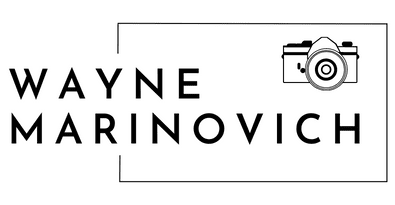How to buy your first digital camera
Introduction
You decide you need a digital camera because you want to get more serious about your photography. You’ve looked online or in a camera store and seen hundreds of camera models on offer. If you’re feeling a little shellshocked, it’s a perfectly natural reaction to have so many brands out there all marketing differing specifications to help you part with your cash. It’s a daunting investment for everyone.
It’s also perfectly normal that you don’t want to invest a substantial amount for a piece of kit that may be wrong for you. We all go through this at some point. I hope at the end of this article you’ll have a clearer understanding of the journey you are about to go on and feel more confident about how to go about buying a digital camera.
Seeing this as a necessary investment in yourself is an easy concept to grasp, but it still requires a little knowledge before you part with your hard-earned money.
All the adverts or camera product descriptions will hurl a tsunami of numbers, specs and weird abbreviated terms at you. Over time they will all make sense to you as you progress on your photographic journey, but for now, they may as well be hieroglyphics. In saying that, they are there to assist you in your decision. Deep down, you know that to be true, but through lack of knowledge, it’s not going to be the exciting buying experience that it should be.
Take heart. I hope to help alleviate the anxiety about buying your first camera with some dos and don’ts plus other digital pointers.
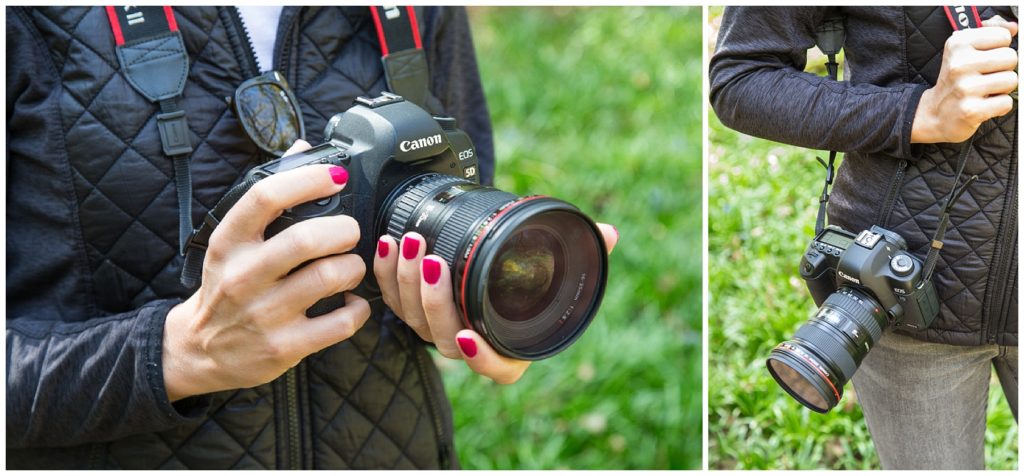
Credit: W Marinovich
Speak to other photographers
A word of warning about speaking to other photographers about what equipment to purchase. And, yes, I see the irony in me writing about it as a long-time photographer. I get asked about buying new camera equipment a lot. My answer always points to the most crucial fact. A fact that I cannot overemphasise enough – work out what you’re passionate about and what you want to photograph.
If you say you’d like to shoot a bit of everything, I’d say stick to using your smartphone for the time being because you’re not serious enough about photography to invest the cash. Sure, there are cheap models of DSLRs (digital single-lens reflex) or mirrorless cameras, but why waste money on what might be a poorly chosen model. It would be a waste if you eventually come to realise what you’d love to photograph but are stuck with something that you regret buying because you couldn’t wait. Pick a genre that you’re passionate about first.
There may be a crossover of genres that you love but find one that you’re most passionate about. If you’re an introvert who loves being in nature, don’t set your eyes upon photographing weddings or big events with crowds of people because you might make more cash. If you love cars and motorsport, understand that you will need a digital camera good enough to capture speed, so a small camera with a slow shutter speed will quickly be highlighted as a problem.
Sit down and work out what your passions are, then pick one or two to start your photographic journey. If this means you have to spend more money, save for a little longer to get the right one. Photography can be a lifelong hobby or career. There will be plenty of time in your life to switch or change in that time. After photographing nature and wildlife for thirty-five years, I switched to urban photography, a significant shift in camera equipment needs. Read more about why I switched here.
What camera type
DSLR and Mirrorless cameras
The major difference between the two is simply one has a mirror at the heart of the mechanism. Mirrorless cameras are the new kid on the block with totally different technology i.e., more digital.
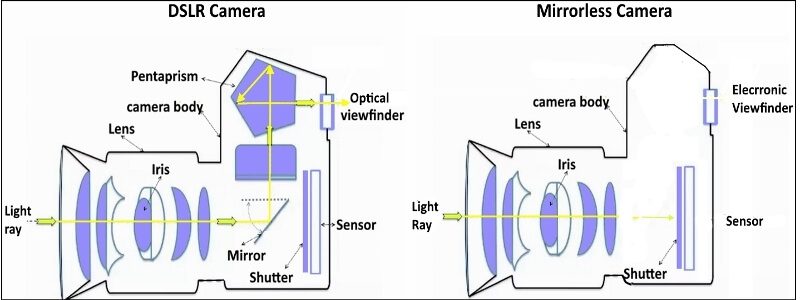
In the DSLR camera on the left of the image, the light (yellow line) travels through the lens, hits the mirror and is reflected upwards into the prism area, then leaving via the viewfinder into your eye. That’s how you see the framed image exactly as the camera sees it. You press the shutter release button, and the mirror lifts (as well as the shutter), exposing the scene to the sensor. Viola, the photo has been recorded.
The mirrorless on the right is more computerised. It doesn’t have the mirror, hence the name, and uses an image sensor to provide the image to the electronic viewfinder (EVF) which you are looking at. It is a little more complicated than that, but you get the idea of the differences.
My recommendation: The future is mirrorless, so if you have the money go that way from the outset without hesitation. Because there is no mirror and other mechanisms, these cameras tend to be smaller and lighter, so are better for when you’re out on a shoot. However, because this is your first camera, don’t shy away from great bargains to be had in the DSLR world. All brands will be stocking both types for a few more years, but they all acknowledge that mirrorless is the future, so won’t be developing many new models. Look out for good bargains as they can easily serve you for three to four years into your journey
Point-and-shoot cameras

Credit: W Marinovich
These cameras are more compact when compared to DSLR or mirrorless types. They are also cheaper and sometimes offer good value like the one above, which I do own. They have built-in lenses, with some having a zoom function. One difference is that can’t change lenses like with the larger cameras mentioned above. This may be a problem as you grow creatively and experiment with different perspectives and angles. Point and shoot cameras tend to have shorter zoom ranges, which will hamper you in creative situations or low light.
My recommendation: If you are a little cash strapped, then these will do nicely to help you begin your journey. They have many of the same camera controls as the major cameras and can be a great learning tool. Also, if you don’t want to stick out like a sore thumb with your large camera, these work a treat because you don’t look like a “professional”.
What about your smartphone?
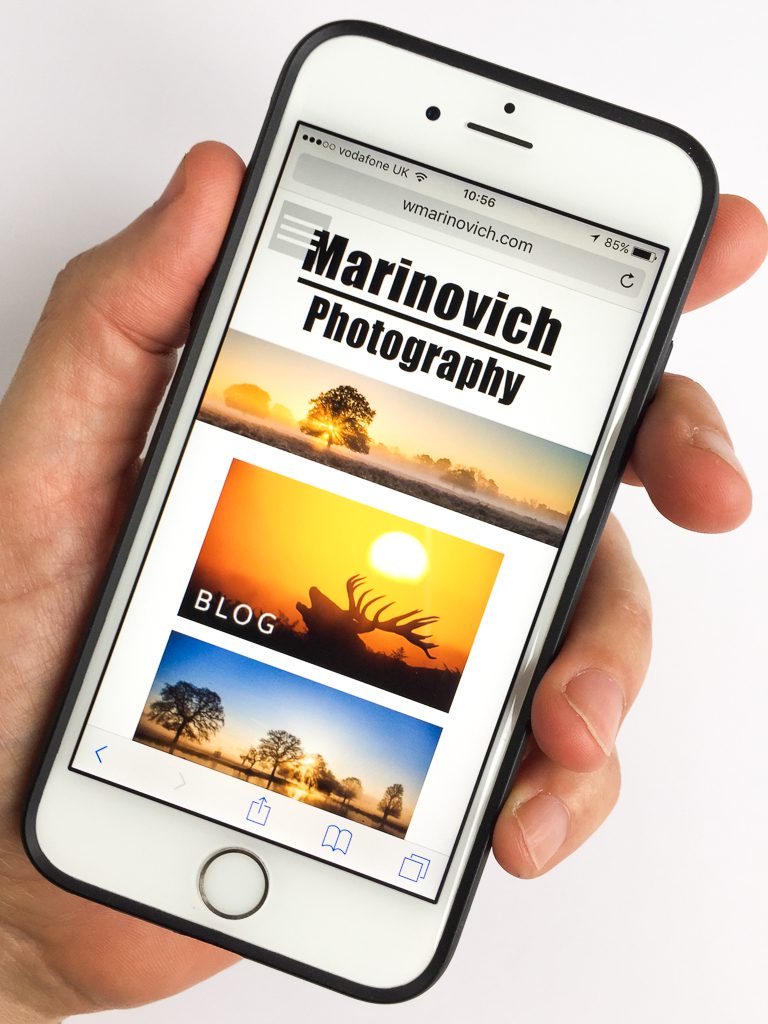
Credit: W Marinovich
Maybe the single greatest photography tool that can fit into your pocket. Sure, it may not look like a camera, but you can get many good photos when you are out and about.
I have a habit of carrying a camera around with me, so I don’t use my phone as a replacement. That said, I do record videos and document personal moments for social media. I also may get the odd good photo that I desperately want to share immediately, but in general, I prefer to be in the moment and not share stuff when I’m shooting.
The compactness of the phone camera sensor may mean that a high pixel count could result in worse quality, so don’t be as enticed by pixel count as you might be in the case of a DSLR. Benefits are easy to find – a phone is compact, portable, connected to the web, and will draw less attention from in a crowd. They use a digital zoom and not an optical zoom (cameras have glass optics inside the lens that often move forward and back). Digital zooms will not give you the same image quality throughout the focal length range as an optic zoom will. The more you zoom in, the higher the level of image degradation.
My recommendation: The latest generations of smartphones have good little lenses and sensors, so if you don’t want to splash out on a camera just yet, use our phone. As a photographer, I don’t use them in that capacity because I usually have a camera to hand. Cameras are better than phones – they have larger censors, have more manual controls, and you have a wide range of interchangeable lenses.
What brand is best?
Now here is a topic fraught with contention and guaranteed to cause upset. This question can be applied to anything – cars, guitars, ovens, phones etc. The list is endless. Everyone you speak to will tell you that the camera they use is the best. This is a natural reaction. Unless you’re at the beginning of a major technology shift that will affect all cameras – the brand is pretty irrelevant because the camera is just a box that captures light.
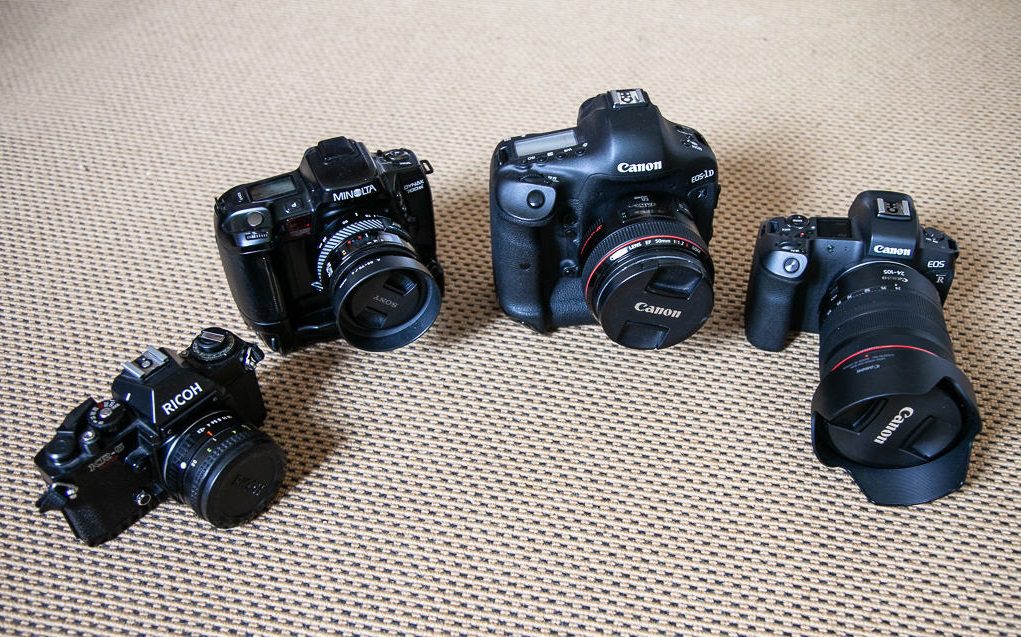
Cameras through the ages. Credit: W Marinovich
The above image is of my four major camera workhorses used throughout my photographic life. There were other brands that I tested for short periods. I also always had two cameras of each as I worked. If I was out in the jungle and one failed, I had another to ensure the trip was not ruined.
- The four represent thirty-five years of photography (there were a few others in between)
- This photo shows two film cameras, one DSLR and one mirrorless – shoot what the best format of the day is.
- Three different brands that I used in my life so far
The top digital camera brands out there are Canon, Sony, Nikon, Samsung, Panasonic, Olympus, and Fuji. There are other smaller ones, but I would ignore them for your first digital camera.
Some brands may differ in ability across other things, for example, video capability. If you are looking to shoot more video than stills, some cameras are better than others – remember what I said, know what you want to shoot before buying. This article looks at photographers’ interests more than videographers, so I don’t want to cover those details here. Most good models will have fair video abilities nowadays anyway.
Sensor sizes and types
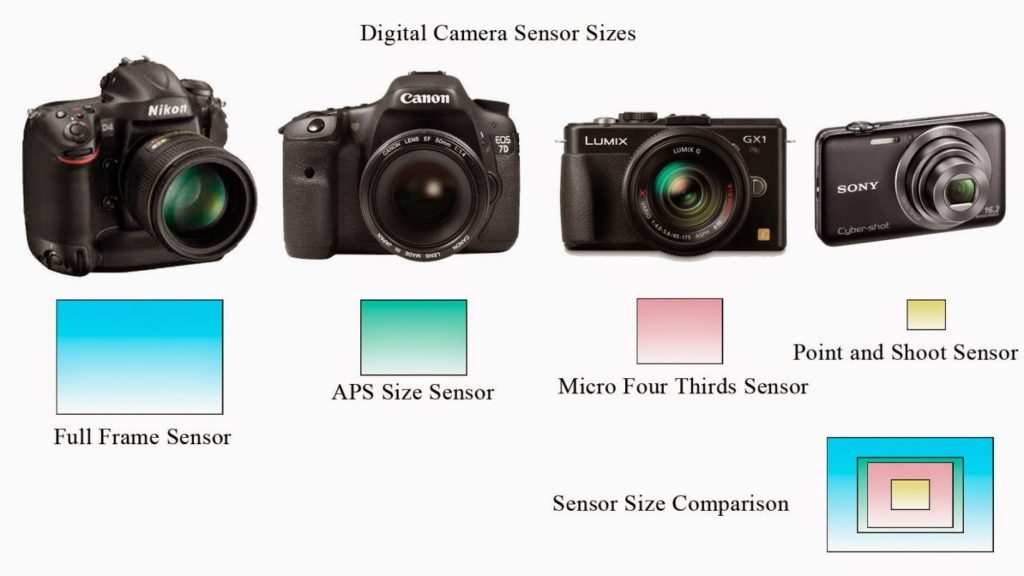
Credit: Google – source unknown
The camera sensor or image sensor is the electronic device where the image is recorded before writing it to the memory card. It’s the rectangular bit of magic that collects all the light information that passes through your lens.
Camera geeks, shop attendants, photographers of old, and “know-it-all” couch warriors could argue with me for hours here about what sensor is better. But as this is your first camera, understand that the sensor is a rectangular grid filled with millions of tiny square pixels (dots).
Each pixel is like a little pot for recording and storing data. Each pot can only ever hold a single colour, and these make up the base layer of the sensor. Without boiling your brain with a detailed explanation which a simple google search could confuse you with even more – remember, the larger the sensor, the more light is used to create a great quality photo. This is a great thing.
My recommendation: You want to be looking for one with an APS-C sensor or, on the pricier end, one with a Full Frame sensor. There are others but stick to one of these two in the beginning.
How many megapixels should I look for
Let’s get the megapixel myth out of the way from the outset. The higher the megapixel count, the better the quality – This is not true.
The latest smartphone camera can’t compete with a 12MP full-frame DSLR when it comes to the clarity and purity of your colours and tones. It’s well known that the sensor size plays a massive role in determining how much detail your image has, and smaller devices don’t have the space to have a full-frame sensor. This may change over the next five to ten years, though.
My recommendation: 16 to 24 megapixels will be fine to start with.
ISO range (sensitivity)
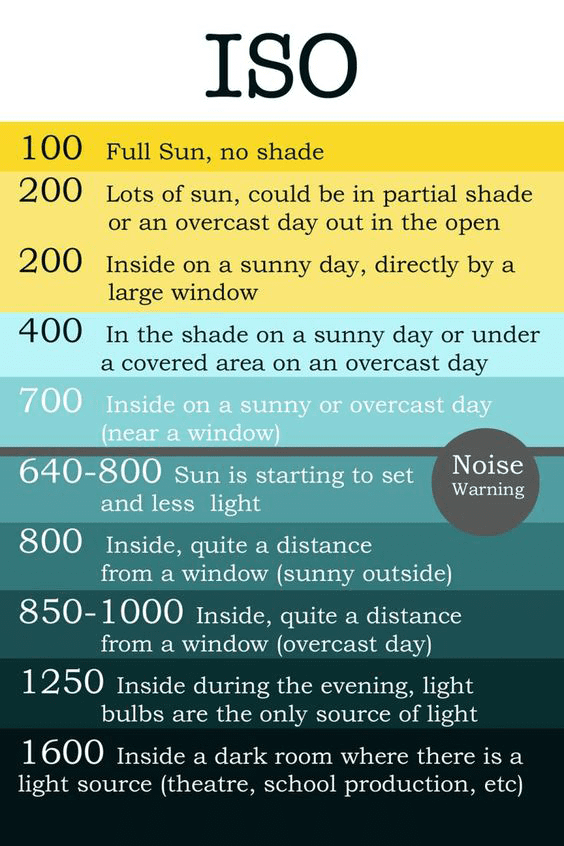
Source: Google. Credit: unknown
ISO is an acronym for International Standards Organisation. Now forget you ever learnt that as the meaning won’t help better your photography one bit. What is important to know about ISO is that it’s a measure of light sensitivity. Each number your camera has in a range of numbers will mean a specific light sensitivity, or how sensitive the settings you have, are to light.
In short, if it’s getting darker where you’re out shooting, you dial up the ISO number to allow the sensor still to deliver the image with the other camera settings you have selected. That comes at a price, though, with something called noise. In the film days, this was termed as grain because it looked like your photo was under a layer of beach sand.
Different levels of camera will offer you different ranges when you look at the specs. As expected, better quality cameras (higher priced) will have larger ranges. The base level is important because you want the lowest number to be around at least the ISO100 mark or lower. This is a setting you’d use in full sun. ISO1600 could be used in a darkened room with small light sources around. ISO2500 and higher are for dark rooms or streets with minimal light sources
My recommendation: Entry-level consumer DSLRs have ranges from ISO100 – ISO25600. Professional cameras could have ranges of ISO40 – ISO150 000. ISO is part of the Exposure Triangle (aperture, shutterspeed, ISO), so is important to look for something that has a wide range.
Frames per second
Often abbreviated as fps. It is the rate at which the camera can capture photos per second. You have settings on most DSLR cameras where you can choose between having one photo taken when you press the shutter release button down or having the camera shoot a burst of frames for as long as you hold it down. For people portraits, you may only need to take a single photo at a time. Photographing a moving car or a pet running towards you may need a burst of photos. Entry-level cameras usually have between 2 and 4 frames per second. Mid-level cameras between 5 and 8 frames per second. Pro cameras have upward of 10 frames per second.
My recommendation: Between 5 and 7 would be a good range, but that depends on what you want to photograph. Landscape photographers won’t worry about this feature.
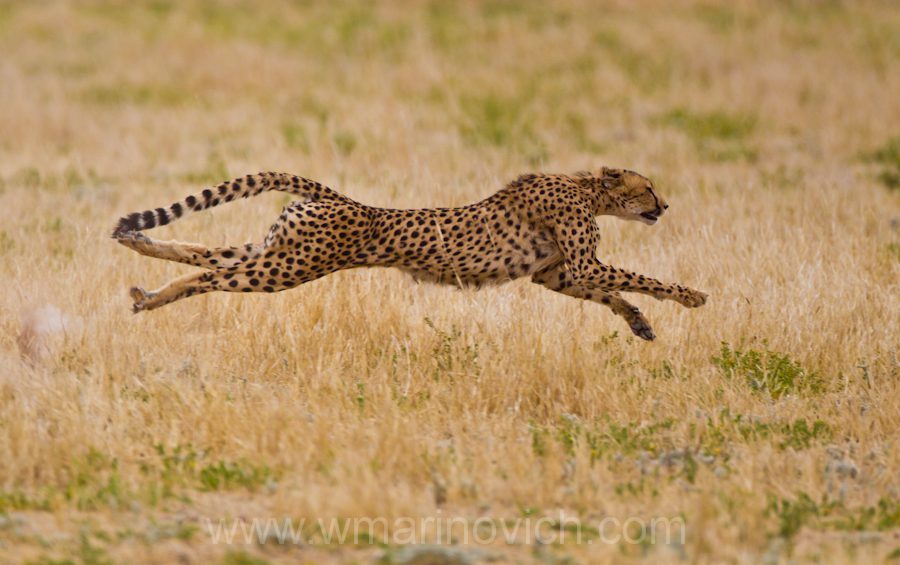
Cheetah hunt in South Africa. Canon 1Dx with its 12 fps. Credit: W Marinovich
Weather sealing
Okay, what I’m really referring to here is the overall camera build. Cheap cameras won’t be as robust to extreme temperatures or survive accidently falling off the seat next to you as you bump along a desert road. Pay peanuts, get monkeys is the old cliché, but this is true with all electronics, though, isn’t it? When you start out on your photographic journey, you need to understand that you will probably get better equipment further down the line. Whether your camera has a plastic body or aluminium one is not that important in the early days. If, however, you are in a cold, wet country, ask about the weather sealing when you buy. It needs to be water-resistant to light rainfall if you are out and about.
My recommendation: Camera body build was always important to me because they were my workhorses out in the bush, so would get the odd bump and scrape. One thing you need to do when investing your money in a camera is to go out and find the model you want in a photography shop. Hold it and see how comfortable it fits in your hands. Is it too big or too small for your hands? You may be holding it for a long time on a shoot, so it needs to be comfortable to use. Does it have rubber grips or plastic grips that might slip in the rain?
Will your camera allow you to progress and grow?
Scalability is the toughest thing to work out for yourself and probably causes most of the anxiety when buying a camera. Will I buy the right one that will last? You want to make a good investment and want the camera to be usable for a long period of time. This is a natural thought process. If it stays a hobby that you do every other weekend, then your first purchase should last you many more years. If you have designs on photography to be more than that – like a career, then I guarantee you will use a few different cameras along your journey as your skill and business grow. New cameras are being developed every year that will allow you to experiment and be more creative.
In conclusion
It is tough to walk into a camera shop or ask a group of photographers about what camera to buy. Camera salespeople often work on commissions and also have old stock to get rid of, so they will guide you in the direction to meet these needs. If you understand that and are still happy to take their advice, go for it. Photographers, on the other hand, will tell you a lot about the cameras that they have right now and why you should buy them too. Nothing wrong with that either. Just be aware of the frame of reference the advice is coming from.
Tell people the genres you want to photograph and ask which models might be the best for that. Do more research. Get to understand what you need technically by writing out a spec with the main pointers I have listed here.
Photography is a technical and creative journey. You need to understand and work on both to get better. If you are one of those people who don’t want to know how your camera works and just want to take creative photos. Don’t waste your money. Spend it on upgrading your smartphone at regular intervals. Photographers need to understand what their camera does so they can use it to record what is in front of them in creative ways. You might as well start those lessons while buying your first digital camera.
I hope this helps eliminate some of the stress of buying your camera. Please email me if you want more advice. You need to understand these facets of your camera to be a good photographer – there’s simply no escaping that fact.
1-2-1 Camera training in London
I offer 1-2-training sessions in London and Brighton to help newbie and amateur photographers who are interested in upskilling. CLICK HERE for more details

